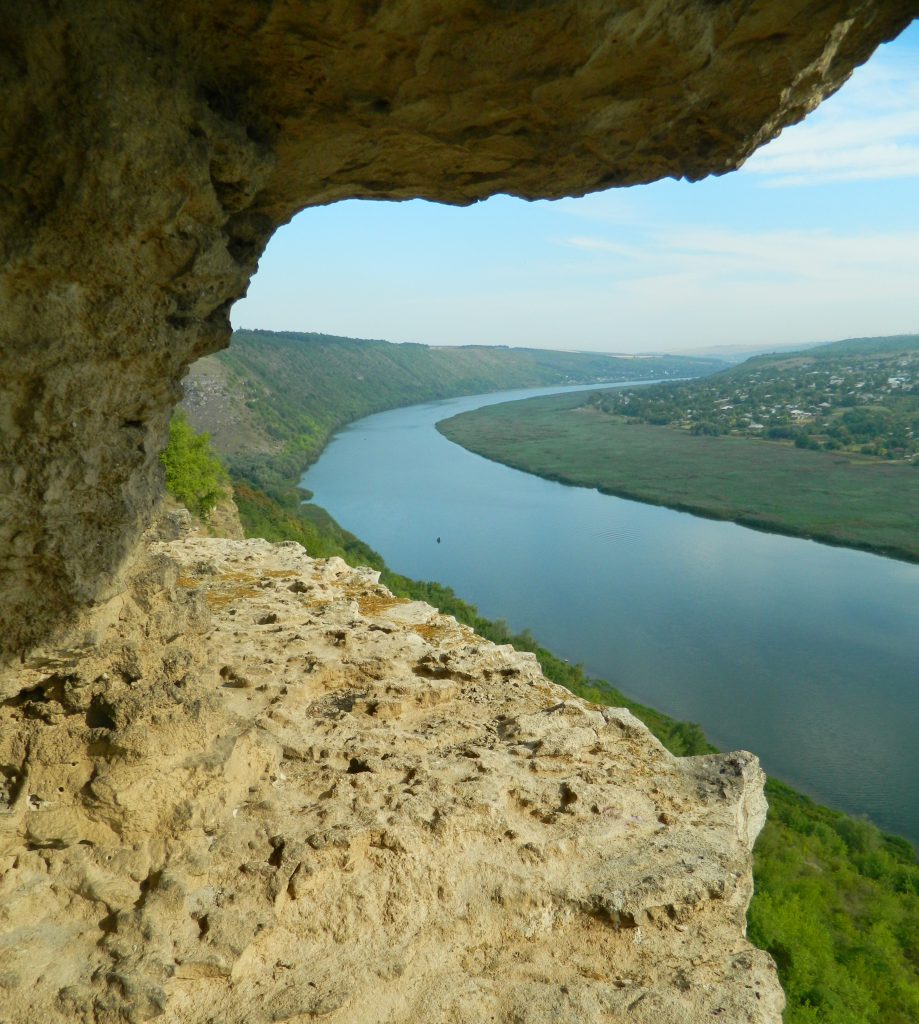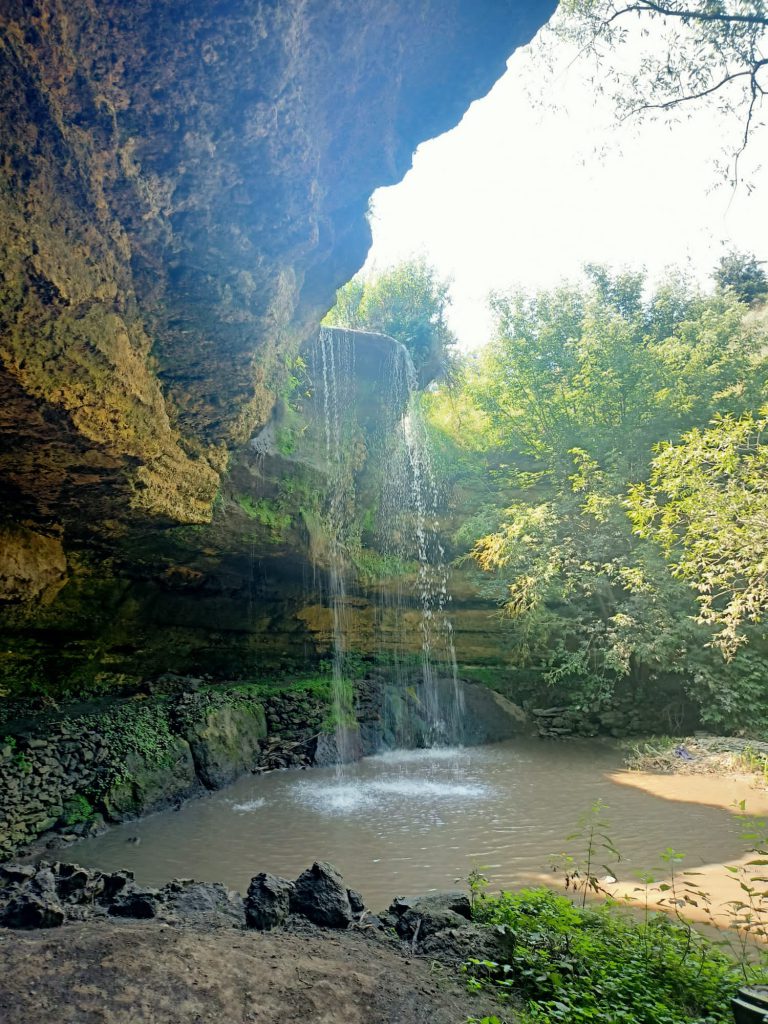
Yesterday, on World Tourism Day, EUDiF’s Diana Hincu sat down virtually with one of the diaspora professionals supporting a tourism-focused action in Moldova, Dr Viorica Olaru-Cemirtan. With the 2021 theme of WTD ‘tourism for inclusive growth’ in mind, Diana and Viorica discuss the concept of heritage tourism and its potential in Moldova for local job creation and sustainable development.
Diana: This year, the World Tourism Organization invites us to celebrate tourism’s potential for inclusive. Both being proud Moldovan diaspora members, I think we agree that our diaspora can play a part in promoting the country’s natural beauty. As Moldova marked 30 years of independence in August, how do you see from abroad the evolution of the tourism sector in Moldova so far?
Viorica: Being mostly undiscovered both by local and international tourists, Moldovan tourism is a sector with unique resources that could bring big potential for inclusive growth, economic development, and more visibility. The industry has not yet made the most of all these opportunities. While in the recent years we have seen more investment in and emphasis on gastronomic and wine tourism, there is lots of room for the development of cultural heritage, eco, and rural tourism.
‘Heritage tourism’ is something that has a lot of buzz, can you explain what it is and what it means for Moldova? How can heritage tourism fit within sustainable tourism?
Heritage tourism is based on the cultural heritage developed by a community and passed on from generation to generation, including customs, practices, places, objects, artistic expressions, and values.
Therefore, heritage tourism is traveling to visit and experience related places, artefacts, and activities that authentically represent the stories and people of the past; it can include cultural, historic, and natural resources. In Moldova, heritage tourism could include visiting a cultural heritage site such as monastery, castle, fortress, open-air museum or historic home, eating the local food, taking part in a festival and discovering the customs and traditions of Moldovans.
The UN Environment Program and UN World Tourism Organization define sustainable tourism as “tourism that takes full account of its current and future economic, social and environmental impacts, addressing the needs of visitors, the industry, the environment, and host communities”. As heritage tourism introduces and celebrates indigenous ways of life, it is complementary to sustainable tourism and particularly relevant in terms of social impact for the communities and regions involved.
Heritage tourism can harness interest in Moldova’s culture to generate opportunities that contribute to sustainable conservation by generating funding, educating the community, and influencing policy. At the moment though, heritage tourism is under-developed, but I hope examples like the action I am supporting will change that.
The action you are working on is to enhance the potential of heritage tourism and related entrepreneurship along the Țipova-Saharna landscape reserve and you are working with another Moldovan diaspora professional also based in Sweden. What examples and recommendations from the Swedish model can you apply in the Moldovan context?
Let me give several recommendations and tell you a little about the example of the Swedish open-air museum Skansen, in Stockholm, the oldest ethnographic museum in Europe which really emulates these recommendations. Skansen is world-class; it is fun-filled, accessible to everyone and could be a good example for Moldova. The museum goes far beyond traditional, static exhibitions and brings Swedish history and culture to life, with actors in traditional costume there to bring alive traditions, work and everyday life from different periods. They celebrate festive and seasonal events with things like musical performances, and there is a strong focus on the natural world and its role in Swedish culture. The diversity of Skansen’s offering makes it a wonderful experience for every visitor, no matter their background, age, interests and needs. There is nothing comparable to Skansen in Moldova, so it can really provide a good example for celebrating and sharing cultural heritage.
From good examples like Skansen, I really want to emphasise the importance of a few elements:
- Good governance is essential to build an integrated heritage tourism management. Focus has to be on the shared responsibility of the different stakeholders for conservation, protection and development of cultural heritage.
- Use participatory techniques to include all visitors and be able to tailor cultural services to their different needs and interests.
- Provide a comprehensive and diverse cultural heritage experience. Cultural heritage is multi-faceted and in constant evolution, so consider how to promote culture from the past and present, whilst looking to preserving it for the future.
- Establish multiple revenue streams for cultural tourism. A strong, dynamic business model is needed for longevity and can be achieved without sacrificing independence, quality or credibility.
Why is it important that local communities and local authorities gain a better understanding of heritage tourism and its potential benefits?
This is an absolutely must, without their support is not possible to build a long lasting heritage tourism business or culture. We will have provide two types of support for central and local context and stakeholders. The first is a workshop on contemporary approaches to the conservation and promotion of open-air museums and reserves, based on our experiences in Sweden. The workshop aims at better understanding of heritage tourism principles and perspectives. It will gather representatives of the Ministry of Economy and Infrastructure, Investment Agency, Ministry of Culture, Organisation of Small and Medium Enterprises, local authorities, as well civil society organisations active in the tourism field.
Secondly, we will raise awareness locally via a workshop on sustainable tourism for local public authorities and the local population. It will be organized specifically in the Tipova community – hopefully in-person next summer – and will target local communities, entrepreneurs, public authorities, youth, and diaspora members. Through this workshop, the aim is to increase the understanding and improve the perception of sustainable tourism and the foreseen contributions of the touristic route for local development, as well as reinforce the positive relationship between tourism, the environment and poverty reduction.
If you could describe just three things about the Țipova-Saharna area you are supporting to a tourist, what these would be?
Țipova-Saharna is a unique cultural heritage three in one: it provides food for thought, energy for body, and is a place for transformation because it helps you to integrate with nature and re-discover yourself.
To be more precise: the uniqueness of this tourist route starts with the fact that it is the largest medieval cave complex in South-Eastern Europe, comprising the largest waterfalls and the most picturesque canyon of Moldova. The wonderful landscape, beautified by the famous waterfalls of the gorge, is also enriched by many mysterious stories and legends. For example, a legend states that next to the largest waterfall is the tomb of the legendary Orpheus. In addition, there are two springs, one with “living water”, which is believed by the locals to be healing, and another with “dead water”. You have to experience this route to test if the story of special energy places works on you and if you meet the ghosts of the old monks of yesteryear!
How would you like to see the heritage tourism sector in Moldova in the next 5 years?
I would like to see an increase of:
- awareness of the potential and importance of the natural and cultural heritage for local, regional and national communities, as well as the integration of Moldavian heritage tourism on the European map of sustainable tourism destinations;
- access to additional financial resources invested in research, protection, conservation, and restoration of heritage sites such as Țipova-Saharna area;
- access of the local population to knowledge and special skills to organize and lead entrepreneurship in sustainable tourism (rural, cultural, and environmental), to generate new income, and ensure decent living conditions;
- funding for the development of infrastructure, as well as for educational and cultural programs linked to heritage tourism.
Finally, I would like to see a changing mind set towards sustainable tourism, circular economy, building a spirit of community and sustainable leadership, and a stronger role for cultural heritage in local development.
Thank you and mulțumesc Viorica, for your enthusiasm and motivation. It is very inspiring and I can’t wait to see how the Țipova-Saharna reserve evolves with support from you and Romeo.



Dr Viorica Olaru
Dr Viorica Olaru-Cemirtan is on a postdoctoral fellowship from the Swedish Institute and became a guest researcher at Uppsala University, Sweden in autumn 2018. She remains deeply connected to Moldova on various levels and recently founded a diaspora organisation in Sweden, CASA MARE. The name is symbolic, referring to the most significant room in the traditional house that keeps the most valuable things and where most important events take place, such as baptisms, marriages, and receiving guests on special occasions. However, it is also an acronym in Romanian: CA = Cetățenie Activă (Active Citizenship – knowing human and citizens’ rights and obligations, at local, regional and global levels), SA = Sustenabilitate Asumată (Assumed Sustainability – the contribution of each to the achievement of the Sustainable Development Goals), MARE = Migrație Abordată Responsabil și Eficient (Responsible & Efficient Migration – because Viorica wants to gather the expertise of the diaspora and use it as a benefit for our personal, community, and country development).
As a historian, Viorica has contributed to many research works about Moldova along with development projects on cultural heritage with the National Museum of Ethnography and Natural History from Moldova.
In 2020, she began up a new initiative promoting heritage tourism in Moldova via the DP4D mechanism. Along with a second Moldovan diaspora professional, Dr Romeo Cemirtan, she is supporting the Museum of Ethnography and Natural History in Moldova to expand the potential of heritage tourism and related entrepreneurship along the Țipova-Saharna landscape reserve. Read more about the initiative here.